Vodafone Mclaren F1 theme by [UKG]Trotter2k
Download: VodafoneMclarenF1.p3t

The #1 spot for Playstation themes!
Vodafone Mclaren F1 theme by [UKG]Trotter2k
Download: VodafoneMclarenF1.p3t
It’s Showtime v1.1 theme by JL_1977
Download: ItsShowtime.p3t
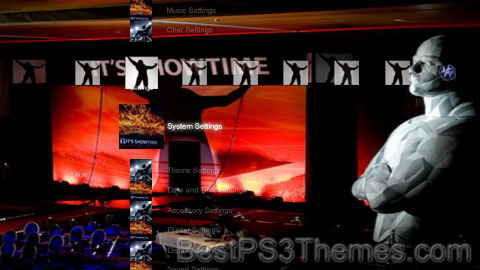
(2 backgrounds, SD only)
P3T Unpacker v0.12
Copyright (c) 2007. Anoop Menon
This program unpacks Playstation 3 Theme files (.p3t) so that you can touch-up an existing theme to your likings or use a certain wallpaper from it (as many themes have multiple). But remember, if you use content from another theme and release it, be sure to give credit!
Download for Windows: p3textractor.zip
Instructions:
Download p3textractor.zip from above. Extract the files to a folder with a program such as WinZip or WinRAR. Now there are multiple ways to extract the theme.
The first way is to simply open the p3t file with p3textractor.exe. If you don’t know how to do this, right click the p3t file and select Open With. Alternatively, open the p3t file and it will ask you to select a program to open with. Click Browse and find p3textractor.exe from where you previously extracted it to. It will open CMD and extract the theme to extracted.[filename]. After that, all you need to do for any future p3t files is open them and it will extract.
The second way is very simple. Just drag the p3t file to p3textractor.exe. It will open CMD and extract the theme to extracted.[filename].
For the third way, first put the p3t file you want to extract into the same folder as p3textractor.exe. Open CMD and browse to the folder with p3extractor.exe. Enter the following:
p3textractor filename.p3t [destination path]Replace filename with the name of the p3t file, and replace [destination path] with the name of the folder you want the files to be extracted to. A destination path is not required. By default it will extract to extracted.filename.
New York Knicks – NBA theme by Jewelz
Download: NewYorkKnicksNBA.p3t
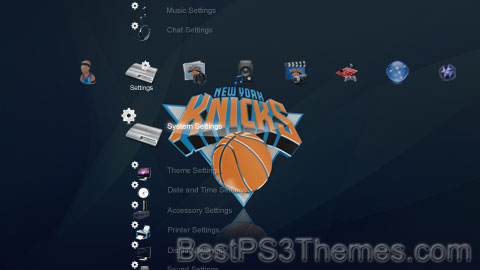
(4 backgrounds)
P3T Unpacker v0.12
Copyright (c) 2007. Anoop Menon
This program unpacks Playstation 3 Theme files (.p3t) so that you can touch-up an existing theme to your likings or use a certain wallpaper from it (as many themes have multiple). But remember, if you use content from another theme and release it, be sure to give credit!
Download for Windows: p3textractor.zip
Instructions:
Download p3textractor.zip from above. Extract the files to a folder with a program such as WinZip or WinRAR. Now there are multiple ways to extract the theme.
The first way is to simply open the p3t file with p3textractor.exe. If you don’t know how to do this, right click the p3t file and select Open With. Alternatively, open the p3t file and it will ask you to select a program to open with. Click Browse and find p3textractor.exe from where you previously extracted it to. It will open CMD and extract the theme to extracted.[filename]. After that, all you need to do for any future p3t files is open them and it will extract.
The second way is very simple. Just drag the p3t file to p3textractor.exe. It will open CMD and extract the theme to extracted.[filename].
For the third way, first put the p3t file you want to extract into the same folder as p3textractor.exe. Open CMD and browse to the folder with p3extractor.exe. Enter the following:
p3textractor filename.p3t [destination path]Replace filename with the name of the p3t file, and replace [destination path] with the name of the folder you want the files to be extracted to. A destination path is not required. By default it will extract to extracted.filename.
Quicksilver theme by Takary
Download: Quicksilver.p3t
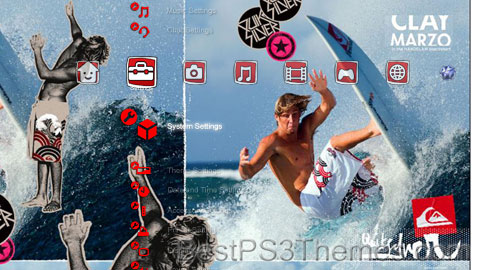
(11 backgrounds HD, 3 SD)
Quicksilver may refer to:
Billabong theme by Takary
Download: Billabong.p3t
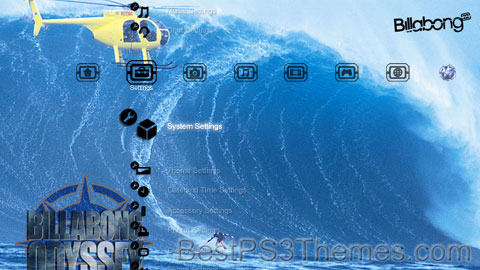
(5 backgrounds, HD only)


A billabong (/ˈbɪləbɒŋ/ BIL-ə-bong) is an Australian term describing a small body of water, usually permanent. It is most often defined as an oxbow lake, caused by a change in course by a river channel; however, other types of small lakes, ponds, or waterholes are also described as billabongs in various Australian sources. The term most likely derives from an Aboriginal Australian language of New South Wales, the Wiradjuri language.
The word billabong is most likely derived from the Wiradjuri language of southern New South Wales, which "describes a pond or pool of water that is left behind when a river alters course or after floodwaters recede".[1] According to the Macquarie Dictionary (2005), the original term bilabaŋ means "a watercourse that runs only after rain", with bila meaning "river",[2] and possibly combined with bong or bung, meaning "dead".[3][4] The attribution of this last part of the word was contested in 2004 by Frederick Ludowyk of the Australian National Dictionary Centre, whose view was that that "-bong" or "-bang" was a suffix "signifying a continuation in time or space". Ludowyk writes that bong meaning "dead" is not a Wiradjuri word, but may have been picked up or assumed from the word "bung" which was originally a Yagara which was used in the pidgin widely spoken across Australia.[5]
The word is first recorded in Australian English in 1836, referring to the Bell River in south-eastern New South Wales, when explorer Thomas Mitchell records the Aboriginal name of the river as "Billibang". It is first recorded in its later, more general sense, by J. Allen in 1853: "This station is situated about half-a-mile inland, over a 'billy-bong' (the native name for a small creek or backwater)". It is not recorded in the first edition of the Oxford English Dictionary (prepared 1882–1888), published before the later contributions of the Australian academic Edward Ellis Morris. It appears in Morris's Austral English: A Dictionary of Australasian Words (1898).[5]
A 2004 thesis suggests that the term could be of Scottish Gaelic origin, derived from words for "lip" or "mouth" and "river".[6]
Definitions vary. A billabong often defined as an oxbow lake, an isolated crescentic pond left behind after a river loop is cut off when the river channel changes course.[7]
Merriam-Webster defines the word as: "1. (a) a blind channel leading out from a river; (b) a usually dry streambed that is filled seasonally", or 2. "a backwater forming a stagnant pool"[8] The Cambridge Dictionary describes it as "In Australia, a low area of ground that was part of a river in the past and that only fills up with water from the river during a flood".[9]
In a 2009 study, billabongs of the Channel Country (a region of outback Australia whose name derives from the numerous intertwined rivulets that cross it) are alternatively termed waterholes, and described as "enlarged channel segments along the main course of the river... typically occur[ring] at the confluence of two smaller channels".[10]
Queensland's Department of Environment, Science and Innovation, in its Queensland Waterhole Classification Scheme, describes waterholes as "referred to by a range of different names (i.e. billabongs, lagoons and waterbodies)".[11]
Another source describes a billabong as "a large body of water", which may be formed from a section of cut-off river, but may also be formed from water left behind after a large flood.[12]
Billabongs are usually formed when the path of a creek or river changes due to bank erosion, leaving the former channel deprived of further inflow and becoming a dead-end gully holding only residual water that has not yet drained or evaporated. As a result of the arid climate of many parts of Australia, these "dead rivers" often fill with water seasonally but can be dry for a greater part of the year.[13]
Many billabongs are of cultural significance and social importance to Aboriginal and Torres Strait Islander peoples, and used as sources of fresh water as well as other resources. Water is an intrinsic part of Country, and essential resource during drought or dry seasons, and they have many intricate ways of understanding how to find water.[1]
The Ngan'gi peoples in the Daly River region of the Northern Territory continue to manage the billabongs' ecology in their Country.[1]
Water-holding frogs living in the billabongs can take up a lot of water before it burrows into the earth in the dry season, and Aboriginal peoples in desert environments can locate the frogs underground by various means.[1]
In the days since the colonisation of Australia, these were important landmarks for European settlers to identify, and many billabongs were given names relating to the local areas.[citation needed]
A billabong retains water longer than the original watercourse and may be the only accessible water in a large area.[14]
Billabongs are significant because they do not have outflow and can hold water longer than sections of rivers especially during drier season, thus serving important ecological functions as waterholes and habitats for freshwater animal and plant species, including the water-holding frog. Many of these species' life cycles are related to the changes in seasons.[1]
Dangers to the ecological balance of billabongs include saltwater intrusion and introduced species. Feral animals have caused salt water to flow into Arafura Swamp, a large freshwater basin in the Top End in the Northern Territory,[1] in which there are many permanent billabongs.[15]
Once a jolly swagman camped by a billabong,
Under the shade of a coolibah tree,
And he sang as he watched and waited till his billy boiled,
Who'll come a'waltzing Matilda with me
Banjo Paterson's popular song "Waltzing Matilda" is set beside a billabong.[14]
Mary Grant Bruce wrote a series of books, known as The Billabong Series, depicting the adventures of the Linton family, who live at Billabong station from around 1911[16] until the late 1920s.[17][18]
Both Aboriginal Australians and European artists use billabongs as subject matter in painting. For example, Aboriginal painter Tjyllyungoo (Lance Chad) has a watercolour entitled Trees at a billabong.[19]
American avant-garde filmmaker Will Hindle produced a short film titled Billabong in 1969.[citation needed]
Billabong is the name of an Australian brand of sportswear for surf, skateboard, and snowboard.[20]
'Bill' = 'bile' = 'lip or mouth' and 'abong' is from 'abhainn' = 'river' with a parasitic 'G' added. A billabong probably has a mouth shape of sorts being at a bend in a river.
![]() Media related to Billabongs of Australia at Wikimedia Commons
Media related to Billabongs of Australia at Wikimedia Commons
Clemson – x_Monk3y_x theme by x_Monk3y_x
Download: Clemsonx_Monk3y_x.p3t
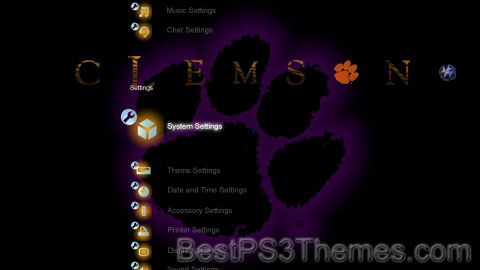
(1 background)
P3T Unpacker v0.12
Copyright (c) 2007. Anoop Menon
This program unpacks Playstation 3 Theme files (.p3t) so that you can touch-up an existing theme to your likings or use a certain wallpaper from it (as many themes have multiple). But remember, if you use content from another theme and release it, be sure to give credit!
Download for Windows: p3textractor.zip
Instructions:
Download p3textractor.zip from above. Extract the files to a folder with a program such as WinZip or WinRAR. Now there are multiple ways to extract the theme.
The first way is to simply open the p3t file with p3textractor.exe. If you don’t know how to do this, right click the p3t file and select Open With. Alternatively, open the p3t file and it will ask you to select a program to open with. Click Browse and find p3textractor.exe from where you previously extracted it to. It will open CMD and extract the theme to extracted.[filename]. After that, all you need to do for any future p3t files is open them and it will extract.
The second way is very simple. Just drag the p3t file to p3textractor.exe. It will open CMD and extract the theme to extracted.[filename].
For the third way, first put the p3t file you want to extract into the same folder as p3textractor.exe. Open CMD and browse to the folder with p3extractor.exe. Enter the following:
p3textractor filename.p3t [destination path]Replace filename with the name of the p3t file, and replace [destination path] with the name of the folder you want the files to be extracted to. A destination path is not required. By default it will extract to extracted.filename.